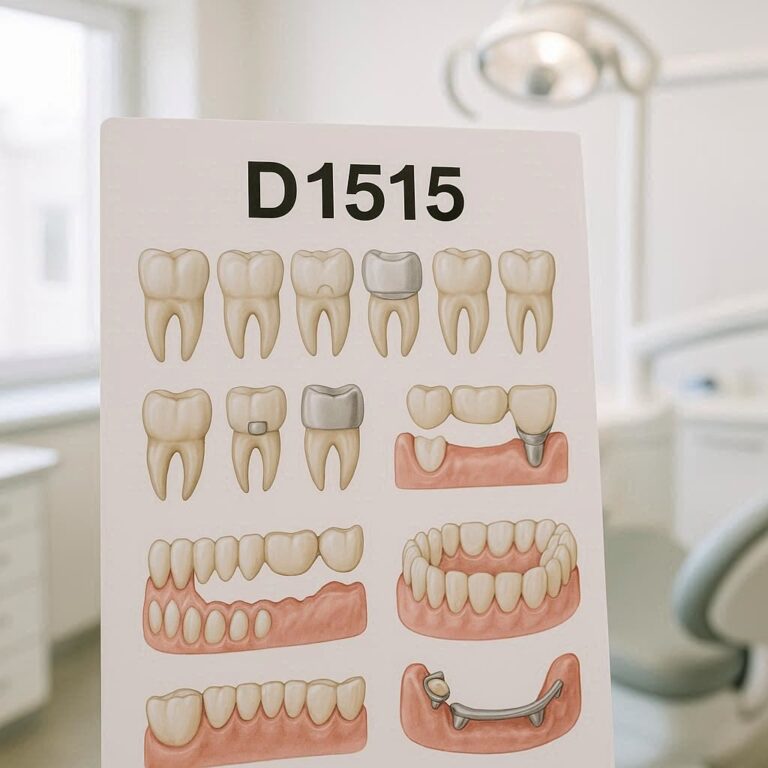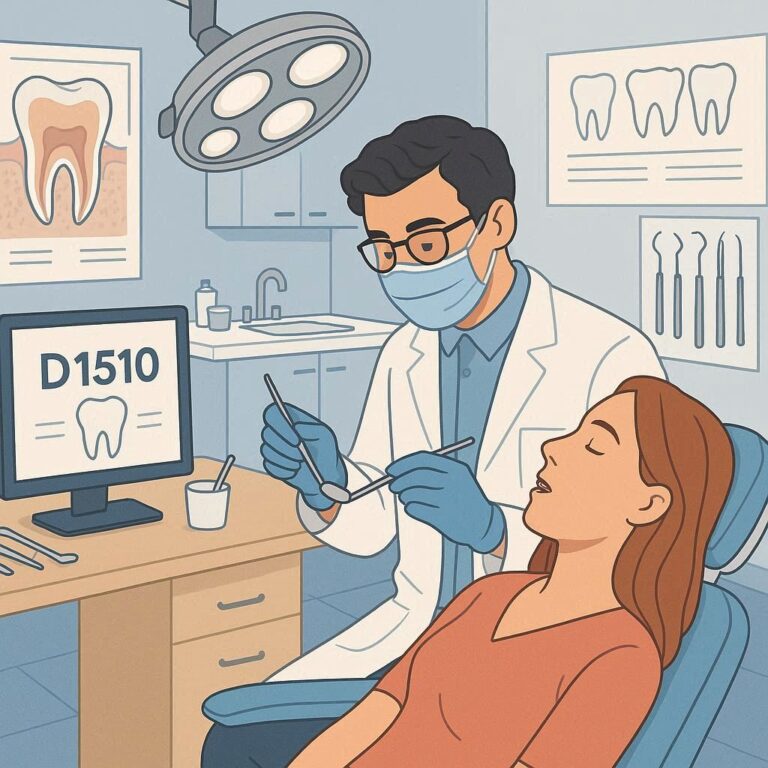Understanding Bridge Abutment Dental Code: A Comprehensive Guide
Dental procedures are an integral part of maintaining oral health, and within this broad field, dental bridgework plays a crucial role in restoring function and aesthetics to patients with missing teeth. One of the critical components of dental bridgework is the bridge abutment. In dental terminology, abutments refer to the teeth or implants that support and anchor the dental bridge in place. To streamline communication among dental professionals and insurance companies, dental codes are used to categorize and document various procedures, including those related to bridge abutments. This article delves into the intricacies of bridge abutment dental code, providing a detailed overview that covers everything from the basic concepts to specific coding practices.
Chapter 1: The Basics of Dental Bridgework
Before diving into the specifics of bridge abutment dental codes, it’s essential to understand the foundation—dental bridgework itself.
1.1 What is a Dental Bridge? A dental bridge is a prosthetic device used to replace one or more missing teeth by anchoring the replacement teeth (pontics) to adjacent natural teeth or implants (abutments). There are various types of dental bridges, including traditional bridges, cantilever bridges, and Maryland bridges. Each type serves a specific purpose, and the choice of bridge depends on the location of the missing teeth and the condition of the surrounding teeth.
1.2 Components of a Dental Bridge
- Pontic: The false tooth or teeth that fill the gap left by missing teeth.
- Abutment: The natural teeth or implants that provide support to the bridge.
- Connectors: These attach the pontic to the abutments.
1.3 Importance of Abutments in Bridgework Abutments are crucial as they bear the load and ensure the stability of the bridge. The strength and health of the abutments determine the success and longevity of the dental bridge.
Chapter 2: Introduction to Dental Coding Systems
2.1 What are Dental Codes? Dental codes, specifically the Current Dental Terminology (CDT) codes, are used to standardize the documentation of dental procedures. These codes are crucial for accurate record-keeping, billing, and communication between dental professionals and insurance companies.
2.2 History and Evolution of Dental Codes The CDT codes have evolved over the years to accommodate advancements in dental practices. Initially, these codes were simple, but as dental procedures became more sophisticated, the coding system expanded to include a broader range of services.
2.3 Importance of CDT Codes in Dental Practice CDT codes are essential for ensuring that dental services are accurately described and billed. They help in avoiding misunderstandings and disputes between dental professionals and insurance providers.
Chapter 3: Detailed Exploration of Bridge Abutment Dental Codes
3.1 Overview of Bridge Abutment Codes Bridge abutment dental codes are specific to the procedures involving the preparation and placement of abutments in dental bridgework. These codes are part of the CDT coding system and are used to describe various aspects of abutment placement, including preparatory procedures, materials used, and the final placement.
3.2 Key Bridge Abutment CDT Codes
- D6545: Retainer – cast metal for resin-bonded fixed prosthesis
- D6548: Retainer – porcelain/ceramic for resin-bonded fixed prosthesis
- D6710: Crown – indirect resin-based composite
- D6721: Crown – resin with high noble metal
- D6750: Crown – porcelain fused to high noble metal
Each of these codes corresponds to a specific type of abutment and the materials used. The choice of code depends on the clinical situation and the materials selected for the procedure.
3.3 Case Studies and Examples To illustrate the application of these codes, let’s consider a few case studies:
- Case Study 1: A patient requires a traditional bridge for the replacement of a missing molar. The abutments are natural teeth, and the chosen material is porcelain fused to high noble metal. The applicable code here would be D6750.
- Case Study 2: Another patient requires a cantilever bridge with an indirect resin-based composite crown on the abutment. The corresponding code would be D6710.
3.4 Common Challenges in Coding for Bridge Abutments Despite the standardized system, dental professionals often face challenges in selecting the correct code due to the complexity of certain cases. Misunderstanding the nuances of each code can lead to billing errors and claim denials.
Chapter 4: Comprehensive Research on Bridge Abutment Procedures
4.1 Preparing Teeth for Bridge Abutments The preparation of teeth for abutments is a critical step in the success of a dental bridge. This section will cover the clinical steps involved, including tooth reduction, impression taking, and temporary crown placement.
4.2 Innovations in Abutment Materials Over the years, there have been significant advancements in the materials used for abutments. This section explores traditional materials like gold and porcelain, as well as newer options like zirconia and resin-based composites.
4.3 The Role of Technology in Abutment Placement The advent of digital dentistry has revolutionized abutment placement. Technologies such as CAD/CAM and 3D printing have enhanced the precision and efficiency of creating custom abutments.
Chapter 5: Best Practices for Documenting Bridge Abutment Procedures
5.1 Accurate Record-Keeping Maintaining accurate records is essential for both clinical outcomes and insurance claims. This section outlines best practices for documenting bridge abutment procedures, including detailed notes on the type of abutment, materials used, and any complications encountered.
5.2 Ensuring Compliance with Dental Coding Standards To avoid issues with insurance claims, it’s crucial to ensure that all procedures are coded correctly. This section provides tips on staying updated with the latest CDT codes and understanding the nuances of each code.
Chapter 6: The Role of Insurance in Bridge Abutment Procedures
6.1 Navigating Insurance Claims for Bridge Abutments Filing insurance claims can be a complex process, especially when it involves dental bridges. This section provides a step-by-step guide on how to navigate the insurance process, from pre-authorization to claim submission.
6.2 Common Insurance Issues and How to Avoid Them Common issues include claim denials due to incorrect coding or lack of documentation. This section offers strategies to avoid these pitfalls and ensure that your claims are approved.
Chapter 7: Future Trends in Bridge Abutment Dental Procedures
7.1 Emerging Materials and Technologies The field of dental bridgework is constantly evolving, with new materials and technologies on the horizon. This section explores potential future developments, such as bioactive materials and AI-assisted diagnostics.
7.2 The Impact of Digital Dentistry Digital tools are likely to play an increasingly significant role in bridge abutment procedures. This section discusses how these tools can improve accuracy, reduce chair time, and enhance patient outcomes.
Chapter 8: Patient Education and Communication
8.1 Educating Patients About Bridge Abutments Effective communication with patients is essential for successful outcomes. This section provides tips on how to explain the process of abutment placement, the importance of maintaining oral hygiene, and what to expect during recovery.
8.2 Addressing Patient Concerns and Questions Patients often have concerns about pain, recovery time, and the longevity of their bridges. This section offers guidance on addressing these concerns and ensuring that patients feel confident about their treatment.
Chapter 9: Conclusion
In conclusion, understanding bridge abutment dental codes is essential for any dental professional involved in restorative dentistry. These codes not only ensure accurate documentation and billing but also play a critical role in patient care. As dental technology continues to evolve, staying updated with the latest codes and best practices will be crucial for delivering high-quality care.
Chapter 10: FAQs
- What is a bridge abutment in dental terms?
- A bridge abutment is a tooth or implant that supports and anchors a dental bridge.
- How are dental bridge abutments coded?
- Dental bridge abutments are coded using specific CDT codes, such as D6750 for a crown made of porcelain fused to high noble metal.
- Why is it important to use the correct dental code?
- Using the correct dental code is essential for accurate documentation, billing, and insurance claims.
- What materials are commonly used for bridge abutments?
- Common materials include porcelain, gold, zirconia, and resin-based composites.
- How has digital dentistry impacted bridge abutment procedures?
- Digital dentistry has improved the precision and efficiency of abutment placement through tools like CAD/CAM and 3D printing.
Additional Resources
- American Dental Association (ADA): For more information on dental coding, visit the ADA website.
- Journal of Prosthetic Dentistry: This journal provides detailed studies on dental prosthetics, including bridge abutments.
- Dental Clinics of North America: A valuable resource for in-depth articles on various dental procedures and materials.
Overview of Key CDT Codes for Bridge Abutments
| CDT Code | Description | Material |
|---|---|---|
| D6545 | Retainer – cast metal for resin-bonded prosthesis | Cast metal |
| D6548 | Retainer – porcelain/ceramic for resin-bonded prosthesis | Porcelain/Ceramic |
| D6710 | Crown – indirect resin-based composite | Indirect resin-based composite |
| D6721 | Crown – resin with high noble metal | Resin with high noble metal |
| D6750 | Crown – porcelain fused to high noble metal | Porcelain fused to high noble metal |
By carefully following the guidelines outlined in this article, dental professionals can ensure that they are accurately coding and documenting bridge abutment procedures, leading to better patient outcomes and smoother insurance claims processes.


